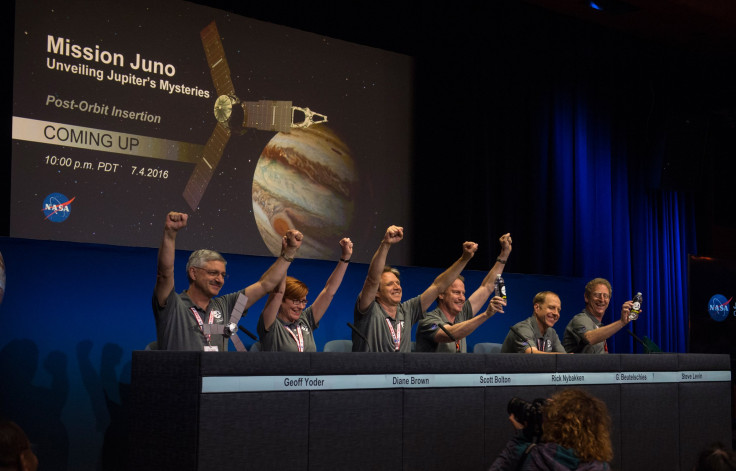NASA’s Jupiter mission gets Australia's DSS 43 touch; To solve solar system mysteries together

Australia’s Deep Space Station 43 (DSS 43), the giant 70 metre antenna dish will play a crucial in unprecedented glimpse of Jupiter. It will lock on to NASA’s Juno probe on Sunday night it navigates Jupiter’s thick toxic clouds n an attempt to uncover more clues as the origins of our solar system.
As NASA’s space probe orbits within 4,200km of the massive gas giant, the DSS 43, the largest parabolic antenna in the Southern Hemisphere at the Canberra Deep Space Communications Complex, will fee crucial information to and from NASA and also track Juno.
The deep space communication complex is one of the three global prime receivers for relaying commands to the spacecraft. It will also receive a wealth of data from Juno over the next 18 months. Juno project scientist Steve Levin said Jupiter has not been orbited this closely or over the poles by any other spacecraft before.
Signals from Juno take around 48 minutes to reach CDSCC antennae at Tidbinbilla, 47km south of the Australian capital and NASA mission control at Southwest Research Institute in San Antonio, Texas, writes Herald Sun. The signals are a billion times weaker than the power of a mobile phone.
There are 67 known moons of Jupiter. The planet is 2.5 times heavier than all the other planets combined and is 300 times the size of Earth. On July 4 and 5, Aussie scientists were the first to receive signals of Juno’s arrival within the gas giant’s wider orbit. The 3.6 tonne Juno spacecraft will use its high-sensitive equipment on board to scan Jupiter’s deadly ammonia and hydrogen sulphide gas clouds.
The spacecraft has used Jupiter’s “gravity to slingshot back around Jupiter for the current, deeper orbital descent.” The JunoCam will take high-resolution photographs that will be made available next week if things go as planned.
Jupiter’s titanic gravitational field has trapped all materials it has ever contained right from where it began. It has also contained everything that it came in close contact with. Astronomers believe analysis of Jupiter’s atmosphere and makeup will solve numerous mysteries surrounding the birth of planets in our solar system.





















